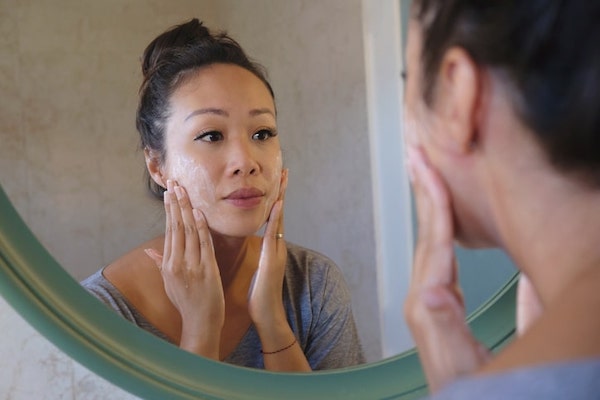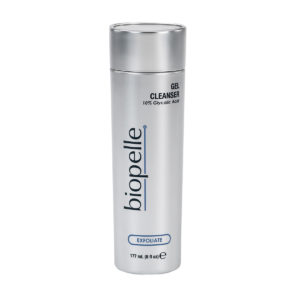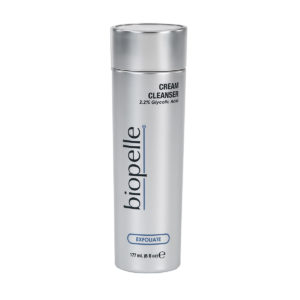There are many ways you can exfoliate or resurface your skin at home. They can range from a simple scrub with a washcloth to using products containing acids or enzymes to slough away dead skin cells.
Find out more about the different types of home-based exfoliation, how to match the right procedure to your skin type, some warnings about exfoliation, and how to help your skin look and feel better after a resurfacing treatment.
What Are the Benefits of Exfoliation?
Skin-care experts tout the benefits of exfoliation as part of your cleansing and anti-aging routine.
When you’re young, your skin cycles new cells to the surface about every 28 days, causing older cells to die and slough off. As you age, this renewal process slows down, leading to duller skin appearance. The production of collagen, which helps your skin look more full, also slows.
Exfoliation can remove those skin cells and help skin appear tighter. Even a quick scrub can provide some benefits. Exfoliation can:
- Boost blood circulation
- Clean pores clogged by dirt and residue makeup or skincare
- Even skin tone
- Help skincare products penetrate deeper
- Remove dead skin and encourage skin cell turnover
- Slow the appearance of aging
What Are The Types of Exfoliation?
There are two general types of exfoliation you can do at home: physical and chemical. Dermabrasion, chemical peels and laser treatments are more involved and generally are performed by medical experts.
Physical Exfoliation
Textured mediums are used to remove dead skin cells in physical exfoliation. This can be done several ways including scrubs or even a washcloth. Clay masks also can be used to clear skin and pores.
Some common natural ingredients used in scrubs include:
- Jojoba beads
- Micro-beads
- Poppy seeds
- Salt
- Sugar
Be careful of physical exfoliation, though, as those with large, irregularly shaped particles can create microtears in the skin. Microtears not only allow bacteria in, they also can weaken the skin’s barrier over time and can lead to dry, flakey skin, redness or signs of sensitivity. Experts warn against over-exfoliating, which can damage your skin or dry it out. Don’t exfoliate every day, and monitor your skin to watch for its reaction.
Chemical Exfoliation, or Resurfacing
Mild acids are used in chemical exfoliation or resurfacing. They dissolve the lipids in the outermost layer of skin, which allows dead skin cells to slough off.
Some of the most common chemicals used are:
- Alpha-hydroxy acids (AHAs), such as glycolic acid or lactic acid
- Beta-hydroxy acids (BHAs), such as salicylic acid
- Fruit acids, such as apple malic, orange peel citric or sugar cane glycolic acids
- Poly-hydroxy acids (PHAs), which are chemical compounds
Which Method Is Right for Your Skin?
Different methods of exfoliation may be more beneficial for different skin types. Here are some common skin types and the methods experts recommend.
Normal
Regular physical or chemical methods are typically fine for normal skin so long as you aren’t exfoliating too often. For a chemical routine, try glycolic acid, which is absorbed quickly and works faster than other chemical methods.
Dry
Hydrating is important for dry skin. Whichever method you choose, look for a more gentle exfoliant or one with moisturizing oils. Try lactic or glycolic acid, which is good for dry, sensitive and mature skin. Exfoliate two or three times a week with a gentle formula like the Exfoliating Cream Cleanser.
Oily
Oily skin may need more exfoliation, and both physical and chemical methods work well. Physical exfoliation tends to work best for oily skin. Exfoliate around two times a week.
Sensitive
If your skin is more sensitive, you’ll want to see which method is less irritating to your skin. Focus on a gentle exfoliating cleanser that won’t aggravate your skin and limit your routine to once or twice a week.
Breakout-prone
If you’re more likely to get acne and other blemishes, chemical methods likely won’t irritate your skin and cause problems like scrubbing can. Use salicylic acids, which have antibacterial and anti-inflammatory properties. Always consult with your dermatologist before starting new skincare if you have acne.
Are There Any Dangers Associated with Exfoliation?
Over-exfoliation can damage your skin. You can cause acne breakouts, bleeding, capillary damage, irritation, micro-tears and more. You can also strip the skin of its natural oils if you’re exfoliating too often.
Monitor your skin for signs of damage, like dry, flaky, or red patches. It can also start to look waxy. Any of these signs can mean either the product you’re using is too strong for your skin, or that you’re exfoliating too often.
Sudden sensitivity to other skincare products that you have used before without problems is another sign of damage.
How Should You Care For Your Skin After Exfoliation?
To protect your skin after exfoliation, be sure to moisturize, and to use a hydrating serum. If you use a chemical method, especially during the day, use SPF sunblock because your skin can be made more sensitive to the sun.
If you have undergone a professional resurfacing treatment like a deep chemical peel, be sure to follow your doctor’s instructions. Biopelle’s Pre-Procedure Set is a collection of essential items to help the health of your skin before you undergo aesthetic procedures.
Biopelle’s Best Products for Your Exfoliation Needs
Biopelle offers serums, cleansers, and exfoliants to help the appearance and feel of your skin. Biopelle Exfoliate features formulas that combine glycolic acid with calming taurine to provide enhanced exfoliation with less irritation.
Shop now for these and other Biopelle skincare products.


